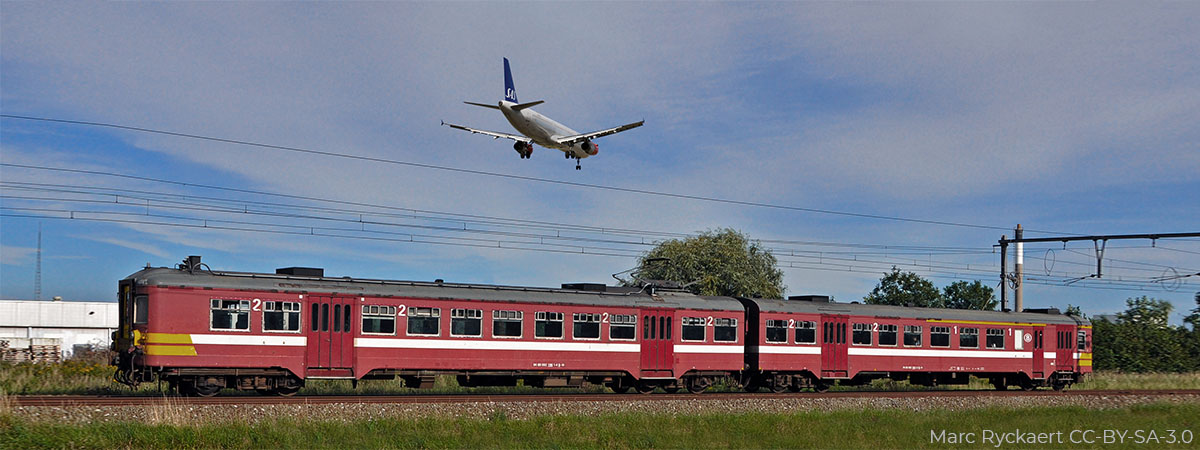A new trend is growing across Europe – flygskam. This Swedish word plainly translates as “flight shame”. The idea originated in 2017 when Swedish singer Staffan Lindberg decided to give up flying and encouraged people to follow suit. He wanted to reduce global CO2 emissions and found the perfect scapegoat in aviation.
This idea gained momentum after Swedish environmentalist Greta Thunberg refused to fly to attend two climate summits, one in New York and the second back in Spain. Finally, she made a double 3-week carbon-neutral sail-crossing of the Atlantic Ocean.
If we want to neutralize aviation emissions, we’d better focus our efforts in decarbonizing the industry, not killing it.
Her argument: airliners’ carbon footprint is too large.
Greta Thunberg – and the flygskam supporters for that matter – have it wrong. The truth is, all things considered, flying is the most efficient way of transportation.
In the Animal Kingdom very seldom life has managed to master the skies, but when it happened, it has proven to be a very successful strategy. Insects were the first animals to fly 350 million years ago, and since then, they have developed into more species than all the other animal groups combined. Among the vertebrates, birds have the most species and, finally, bats represent about 20% of all mammalian species, second only to rodents.
Flying pays off. It is a very energy efficient way to move around.
The flaw in Flygskam’s argument lies in measuring the “goodness” of a mode of transportation on energy efficiency only. Their reasoning is not very fair, and at best, can be misleading. It would be like measuring the wellbeing of a nation based on the GDP only, and not considering other factors such as life expectancy, income distribution, healthcare, safety, education, corruption and so on. Likewise, transportation is about more than energy efficiency, other issues such as the environmental costs of infrastructure and even just plain feasibility play also an important role.
Railroads – like highways – inflict a considerable environmental impact on territory – a thousand-mile-long permanent scar. They damage forests, prairies, wetlands, aquifers. They increase noise, water, and air pollution. Furthermore, railroads constitute a formidable wall to people and especially to wildlife. They bring about habitat fragmentation preventing species from migrating, causing inbreeding, or simply increasing mortality since animals cannot cross to better hunting or grazing grounds1.
Also, a railroad link allows you to travel a two-way ticket only – Paris-Brussels and Brussels-Paris – not more. Even cars or trucks can abandon paved roads and make it through bumpy roads to remote destinations if needed. Airplanes go beyond that; they have no limits. They can take you anywhere in the world over snowcapped mountains, deep valleys, treacherous rivers, arctic tundra, scorching deserts, and dark oceans at the “environmental” expense of only a 3,000-meter-long runway.
You can’t beat that.
If flygskamers were to choose a mode of transportation based on energy efficiency only, they would be riding bikes everywhere, and they don’t. Even Greta Thunberg chose to travel by train – despite its non-zero carbon footprint – on her return trip from Madrid to Stockholm.
I do not mean to put her down. I really admire her efforts to raise awareness on climate change. She walks her talk and has probably done much more for the cause than billionaires like Bill Gates. His inconsistent private-jet rides to attend climate change summits speak louder than his words and undermine his moral authority on the subject.
Finally, do not get me wrong; electrified train travelling can play an important role in decarbonization. However, environmentalists – flygskamers or not – should not overestimate its CO2 emission reduction potential. Short-range routes – less than six to eight hundred kilometers – are the only ones viable for train competition, and these routes represent less than 7% of total aviation emissions. Furthermore, modal shift may not always be feasible due to high cost of new rail infrastructures for low frequency markets or just due to geographic obstacles such as waterways.
Flying has been, is and will remain the most efficient way of transportation. Cancelling flying is an impossible undertaking, like trying to stop an upcoming tide. If we want to neutralize aviation emissions, we’d better focus our efforts in decarbonizing the industry, not killing it.

(1) It is interesting to note that “flying” animals are the only ones not hindered by ground infrastructures.


